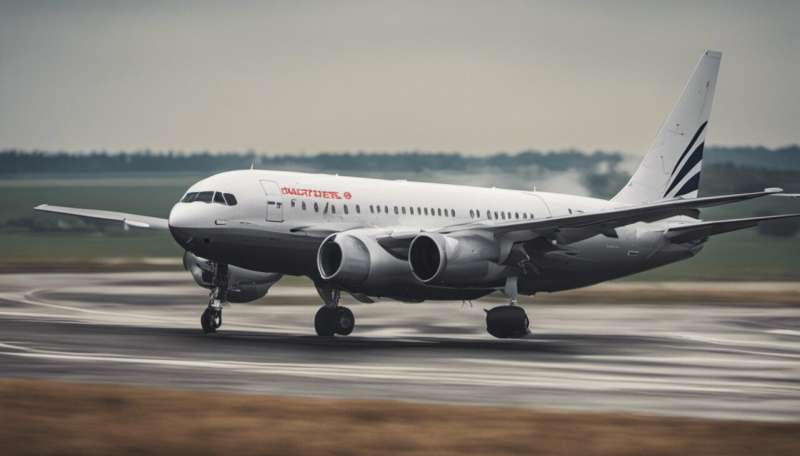Credit: AI-generated image (disclaimer)
A key requirement for aircraft security is an efficient and modern communication network. The procedure carried out before each take-off requires input by multiple individuals at each stage. A fail in communication may lead to an accident and, with air traffic in Europe estimated to grow 50% by 2035, integrating communication in a clear and coherent manner is paramount to safe and efficient transport.
The EU funded project SANDRA (Seamless Aeronautical Networking through integration of Data links Radios and Antennas) is working to integrate today's complex and disparate aircraft communications into a coherent digital architecture, merging a full range of applications and services.
'We use digital communications in every facet of our lives. Just look at the number of people who have smartphones and tablets. But often aircraft rely on a combination of decades-old analogue communications and a separate satellite-based system, making cockpit communications both complex to use and inefficient. SANDRA is bringing cockpit communications into the 21st century by simplifying the process for pilots and providing the platform for many more advanced services,' said Dr. Markus Werner, Managing Director of project partner TriaGnoSys.
SANDRA researchers are looking at innovative strategies to coordinate cabin crew operations, in-flight and on-ground passenger services, air traffic management and security services. The consortium identified four main areas that would require integrated solutions including service, network, radio and antenna-based systems.
Project partners say SANDRA will provide an opportunity for new Air Transport Management (ATM) services able to transfer a vast amount of data. They foresee a paradigm shift in the next ten years from voice communications between air traffic controllers and pilots, to air traffic control management systems based on data communication between computers.
Although aeronautical electronics and communication technologies have already evolved from analog devices to the digital domain, one of the difficulties SANDRA's architectural model sought to address was the integration of service domains with different functions into a streamlined network. In this context, the SANDRA communication system aims to be more cost-effective and to enable high-market demand for broadband passenger and enhanced cabin communication services.
In June this year the consortium successfully trialed flights at the German Aerospace Center to test AeroMACS, a new avionic communication system based on modular and flexible radio architecture. 'AeroMACS will provide broadband wireless data connectivity over airports, dedicated to aeronautical industry. The trial validated this technology also as part of the future IPv6 based mobile network,' notes Massimiliano Amirfeiz, responsible for Avionics System Innovation at Selex ES, the company coordinating the project.
The flight tests identified SANDRA's potential benefits in areas of better integrity and safety of flight due to the flexible usage of all the available connections and improved reliability as a result of an integrated network. The interoperability of SANDRA's technology could make the introduction of new communication technologies more attractive to airline carriers.
The SANDRA concept will illustrate the ability of integrated architecture to easily reconfigure and adapt for the flexible implementation of new communication services. The EU provided around EUR 15.6 million to fund the initiative.
More information: SANDRA sandra.aero/2013/
Provided by CORDIS




















